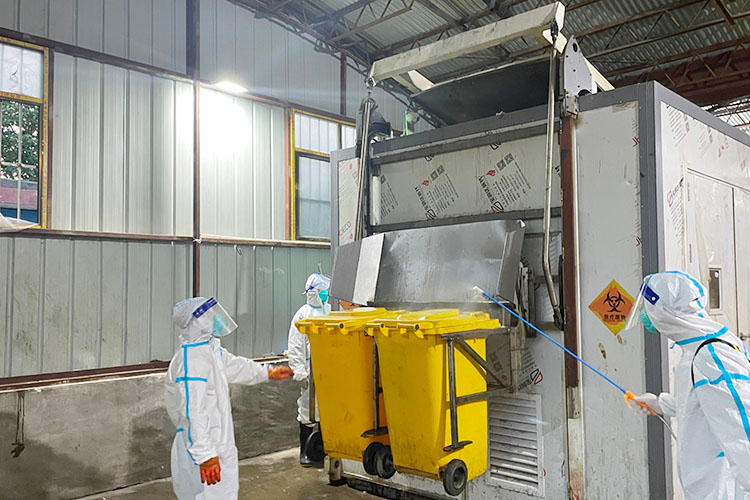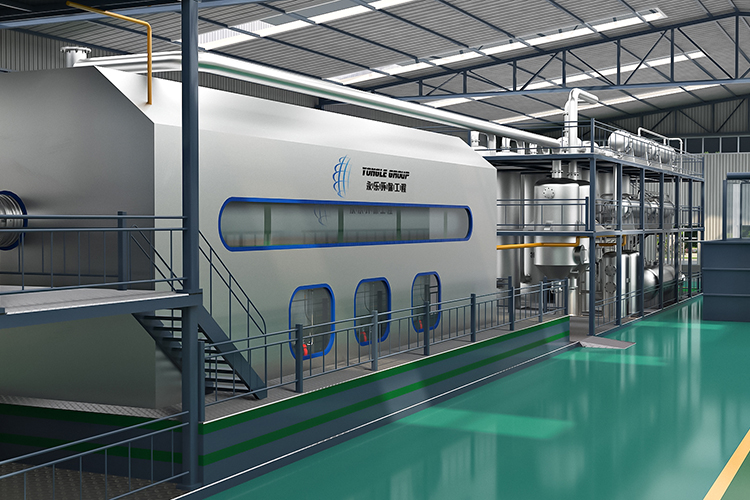With the development of modern medicine, the generation of medical waste is increasing day by day, and the safe disposal of medical waste has become an important issue that urgently needs to be addressed. Medical waste contains a large amount of pathogens, chemical residues, and harmful substances. If not handled properly, it may not only pollute the environment but also endanger human health. Therefore, how to efficiently and environmentally treat medical waste has become a major issue in the medical industry and environmental protection field. In recent years, anaerobic pyrolysis sterilization equipment for medical waste has gradually become an important solution in medical waste treatment as an innovative treatment technology.

The core technology of anaerobic pyrolysis sterilization equipment for medical waste is anaerobic pyrolysis, which decomposes medical waste at high temperatures in an anaerobic environment, converting harmful components in the waste into harmless gases and solid residues. This process is different from traditional incineration methods, as incineration usually requires the participation of oxygen, which may produce harmful gases such as dioxins and nitrogen oxides during the combustion process. Anaerobic pyrolysis, through high-temperature heating under anaerobic conditions, effectively avoids the generation of these harmful substances and reduces the risk of secondary pollution, thus having higher environmental friendliness.
Another important feature of this device is its efficient sterilization capability. In the high-temperature environment of anaerobic pyrolysis, pathogenic microorganisms, bacteria, and viruses in medical waste are completely eliminated. Medical waste often contains infectious substances, and if not handled properly, it can easily become a carrier for disease transmission. Through anaerobic pyrolysis technology, not only can the sterilization effect of waste be ensured, but also the spread of pathogens during waste treatment can be prevented, ensuring public health safety.

In addition to environmental protection and sterilization, medical waste anaerobic pyrolysis sterilization equipment also has a certain resource recycling function. During the pyrolysis process, waste is heated to high temperatures, generating a large amount of thermal energy that can be recovered and converted into energy supply for equipment, and even further processed to convert waste into useful solid substances or gases. In this way, not only can the volume of waste be reduced, but energy utilization efficiency can also be improved, achieving resource recycling. Therefore, medical waste anaerobic pyrolysis sterilization equipment not only has environmental protection functions, but also helps to reduce processing costs and improve economic benefits.
In practical applications, medical waste anaerobic pyrolysis sterilization equipment is widely used in various medical institutions, including hospitals, clinics, pharmaceutical factories, laboratories, etc. These places usually generate a large amount of medical waste, and their treatment requirements are very strict. Traditional incineration, landfill and other treatment methods have certain hidden dangers in terms of environmental protection and hygiene, while anaerobic pyrolysis technology can ensure thorough disinfection of waste and reduce environmental pollution through efficient sterilization and harmless treatment. For example, waste such as syringes, needles, medication bottles, and infusion sets generated by hospitals can be effectively reduced in their impact on the environment through anaerobic pyrolysis treatment, while avoiding the emission of toxic gases during traditional incineration processes.

Overall, the anaerobic pyrolysis sterilization equipment for medical waste provides a new solution for the treatment of medical waste. It can effectively eliminate pathogens and harmful substances in medical waste through high-temperature decomposition technology of anaerobic pyrolysis, avoiding the pollution risk caused by traditional incineration. The resource recycling function of the equipment not only reduces processing costs, but also improves energy utilization efficiency. With the continuous maturity of technology and the promotion of application, anaerobic pyrolysis sterilization equipment for medical waste will play an increasingly important role in the field of medical waste treatment, providing strong guarantees for improving environmental quality and public health safety.
Yongle Environmental Protection is mainly engaged in the research and development, production and sales of complete sets of technical equipment for organic solid waste disposal and comprehensive utilization. Production and manufacturing, domestic waste treatment equipment, tire pyrolysis equipment, medical waste disposal equipment, hazardous waste disposal equipment, and achieve efficient and comprehensive utilization of resources through independently developed low-temperature anaerobic pyrolysis equipment technology solutions.
Tags:Detailed explanation of anaerobic pyrolysis sterilization equipment for medical waste,anaerobic pyrolysis sterilization equipment for medical waste,YONGLE GROUP
 Latest news
Latest news


























